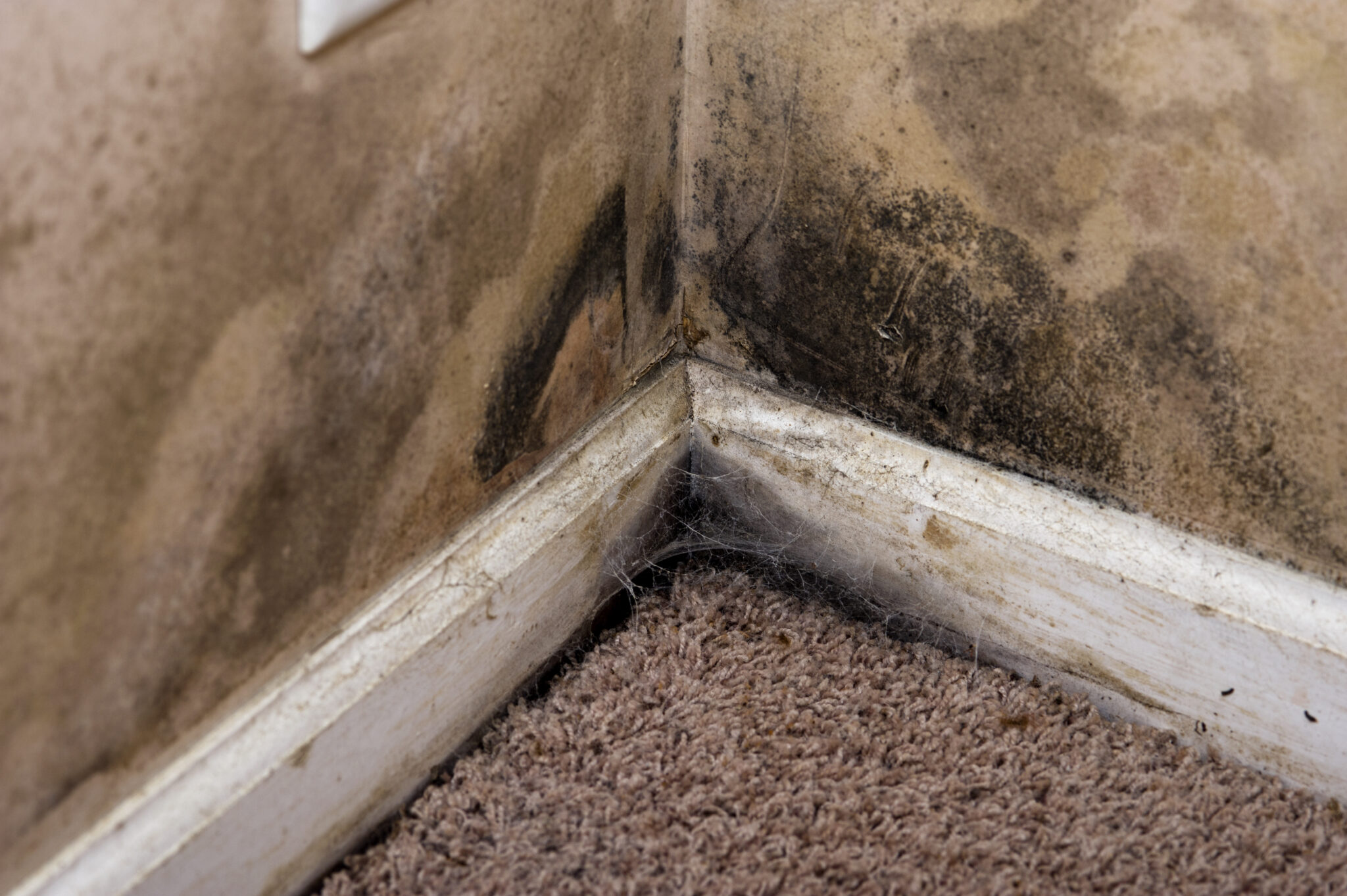
Over the past 40 years, significant changes have been made in construction that have negatively impacted air quality in homes. These five reasons contribute to the increased mold exposure in homes that can cause health issues.
1. Homes can’t breathe:
Heating systems cause moisture vapor to be pushed out to exterior walls. On that surface, if below the dew point, vapor condenses into a liquid. Construction material, like foil covered foam board, used to insulate the home creates an impermeable barrier preventing the wall from quickly or fully drying.
2. Construction changes:
The use of real lumber by the building industry has been replaced by manufactured particleboard and pressed wood. Particleboard is created by using wood chips, fibers or small scraps of wood under intense pressure with adhesives and chemicals. The resulting product is a fraction of the cost of lumber so saves money on construction costs. Saving money is a good thing, but it also causes concerns.
One concern with particleboard is that it will absorb moisture and swell, so if it is used as an underlay for flooring, moisture barriers must be placed inside the foundation to prevent moisture reaching the particleboard. There is also a concern if water is spilled or leaked on linoleum, carpet, hardwood or anywhere particleboard is used.
Particleboard takes up to five times longer to dry than lumber, giving mold an opportunity to grow. If mold begins to grow on particleboard, there is a concern of potentially toxic mycotoxins being emitted from the “broken down” adhesives and other chemicals used in the manufacturing process.
Another building industry swap was lath and plaster construction for drywall. Plaster is a more solid and durable choice but it is labor intensive, and special training and skills are required. Drywall panels are made of gypsum plaster and pressed between two thick sheets of paper. It is usually a less expensive and labor-intensive option. However, plaster is solid construction; drywall construction creates a cavity space behind the panel that can become a breeding ground for mold if moisture gets inside.
3. Little attention paid to drainage:
The larger the home, the more complex the roofline. Rain water can get diverted from one roof section to another until a large volume of water flows to one lone rain gutter. If the rain gutter is blocked by debris or just overwhelmed by the volume of water, the water can flow to where it shouldn’t be. If the roofline abuts an exterior wall, the flashing may not be sufficient to keep water from wicking into the wall and into the home.
If the house is built on a foundation, in time water from irrigation or rain may seep into the basement or crawl space. If a house is built on a slab floor, attention needs to be paid to planters next to the exterior walls so that overwatering does not cause water to seep into the home.
4. Building larger homes:
The larger the home, the more chance of water related problems. With several bathtubs, toilets and sinks, dishwashers, refrigerators with icemakers, washing machines and outdoor faucets, the chance of leaks and flooding increases. When large homes are vacation homes and not occupied year-round, the lack of attention, the decreased year-round occupancy, less heating, less cooling and less ventilation often lead to mold growth.
5. 5G Electromagnetic Frequencies:
Several studies have found that low-level EMF exposure of the type found in many homes induces mold growth. Similar research done at Chernobyl found ionizing radiation encourages mold growth.
A study by Dr. Dietrich Klinghardt determined the following:
- The amount of cell phone radiation in a cubic inch of air is now several million times higher than it was 10 years ago.
- The production of biotoxins in mold cultures increased by more than 600 times when exposed to ambient cell phone radiation from a nearby cell phone tower.
You may not be able to do anything about how your home was constructed, but now that you are aware of these five reasons that contribute to mold growth in your home you can take steps to lessen or prevent the growth of mold.
